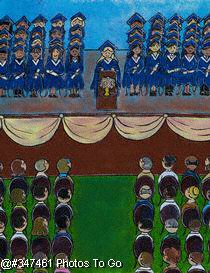|
The costs of Special Education Programs are high due to factors such as the small quantity of students in the class to
guarantee an individualized approach; and the presence of a teacher;s aide. According to state and federal regulations, when
the number of students with special needs reaches 12, the school has to assign an aide to help the teacher in his or her work;
and the shortage of specially trained teachers results in high staff expenses. Yet, there are many ways to reduce the expenses,
like using different charitable foundations. The government can also develop various programs aimed to support children with
disabilities. Some solutions can include financing a student in particular, instead of supporting the categories or groups
of students in general. The government should also concentrate the attention on the need for reform in special education financing.
In 1998 the Department of Education in the United States of America noticed the disproportional placement of minorities
in special education, as well as its overrepresentation. According to Jansen and Russo, African Americans make up approximately
40-42% of special education population, and 35% of all students accordingly. Generally, due to various social and economic
conditions, the minorities (and especially the African American boys) make up a fair amount of students having certain disabilities.
Patton, Meyer and Artiles suggest that the disproportionate representation of African Americans being placed in the special
education program include: family involvement, various behavioral problems, and the severity are all possible factors of overrepresentation.
States and districts have many differences in population density, demographics, geography, resources, teacher education programs
and license policies, which could all contribute to uneven financial and teaching assistance. It is also sad to note that
about 6% of public school teachers have left their jobs each year since the 1980s. More recently, up to 13% of special education
teachers leave every year, and many of them have only taught a few years. The career special education has more than doubled
in two decades. In 1976-77, there were about 331,000 special education teachers and aides. By 1997-98, there were more than
800,000. The student-teacher ratio in special education has decreased. In 1977, there were 21 students with disabilities for
every 1 special education teacher. In 1994, this ratio was 16 students per special education teacher .
TEACHERS
Special Education Teachers communicate with many people on a daily basis, such as: parents, social workers, school psychologists,
occupational therapists, physical therapists and school admninistrators. The work is emotionally and physically draining
because of the administration tasks and the workload. A lot of paperwork is required to track the student's progess. The
parents' opinion on their child's education is always a question to them, thus putting much pressure on the teacher to meet
all needs. Many teachers leave the profession because it is too overwhelming.
TRAINING/EDUCATION
A bachelor's degree is required and training in a specialty, such as a learning disability or a behavior disorder. Some
school require a master's degree in order to teach.
OVERREPRESENTATION OF MINORITIES
Mostly African-American males are misdiagnosed or misplaced in special education programs. It is due to culturally biased
testing. Many foreign students are misplaced as well because English is not their first language, so they obviosuly will
not score so good on placement exams, and are then placed into special educataion classes. Language, poverty and the types
of assessments are all factors. Many argue that it is a form of discrimination.
COSTS
Per student special education costs have been rising because more children are being classified as needing special education.
The average cost for a general education student is $6,000, while a special education student averages $18,000. WHY? Special
Education class sizes must be small due to state and federal regulations, as well as the student's need. Teacher aides are
required for a class size of more than 12 students. Becuase of the shortage of qualified teachers, schools must pay a growing
staffing cost. Most job demands are in inner cities and rural areas, and not many are in wealthy suburbs.
FUNDING
Congress does not fully IDEA. With 6 million students served under IDEA, schools are qualified to receive $18.1 billion
in federal funds, but only receive $7.5 billion. Schools are only receiving 17% of the federal commitment of the 40% average
per pupil expenditure. Federal funding is $10.5 billion short of full funding this year. Increased federal funding will
help raise salaries, allowing districts to enhance recruitment and retention. Congress will fully fund IDEA by 2035.

|

